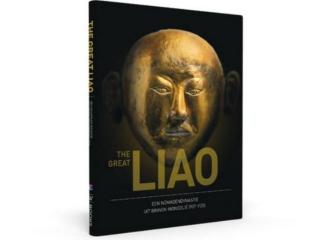The Great Liao? Chinggis? CEASG?
| Date: | 23 January 2017 |
| Author: | Tjalling Halbertsma (CEASG Director International) |

Ever heard of the Great Liao? Or the Da Liao? Perhaps the Liao dynasty? As opposed to the Tang, Ming or Qing dynasties, the Liao have been largely overlooked by most and remain largely unknown to this day. Yet the Liao conquered and ruled vast parts of what is today Northern China and Mongolia - Siberia even. For as long as 200 years (907-1125 AD) that is, two full centuries. The dynasty, founded by the Khitan people, was the first of a series of conquest dynasties of China, culminating in the Mongol rule of China and the Yuan dynasty.
The change brought about by the dynasty-founder and conqueror Abaoji was far reaching and extraordinary: the Khitan, a nomadic and largely illiterate people devised two new scripts (based on Chinese), founded cities (though the Liao rulers may have preferred their felt nomadic tents) and, importantly, organized their rule in an administration for the sedentary subjects in the South (mainly Han Chinese) and an administration for the nomadic peoples in the North (including the traditional Khitan and nomadic peoples of the steppe). After the Liao's decline in 1125 AD, the dynasty resulted in the short-lived Khara Khitai, and lived on through the Khitan Yelu elite (or so called steppe intelligentsia), who served and rose to prominence under the Mongols.
Importantly, the attractive and wonderful Drents Museum in Assen hosts an exhibition on the Great Liao opening April 23rd next (the museum has an impressive track record on exhibitions related to East Asia, exhibiting Xian’s terra-cotta warriors, Tang dynasty art, as well as North Korean propaganda paintings).
CEASG-faculty of the University of Groningen, including prof Oliver Moore and the current author, are contributing to the catalogue of the Great Liao (Dutch language), highlighting the Khitan nomadic heritage, the rise and fall of the Great Liao and Khitan and Liao art and culture. The objects in the exhibition are mainly sourced from the Museum of Inner Mongolia in Hohhot, China.
Interestingly, around the same time, the National Military Museum in Soest exhibits an exhibition on the world renowned conqueror Genghis Khan (or rather, for Mongolists and purists, "Chinggis Khan"), also sourced from the Museum of Inner Mongolia (with the current blogger giving a guest lecture on 12 March. For those interested in the Nestorian remains of Inner Mongolia, the Genghis Khan exhibit at the NMM also displays a rare porcelain brick, displaying Nestorian imagery and Syriac script from Chifeng, Inner Mongolia.
As for the Khitan, their name, through renderings such as “Kitaya" or “Cathay", has in large parts of Eurasia become the word to indicate China (including in Russian and other slavic languages). In Europe, Marco Polo’s “Cathay" would become, a synonym for an exotic and far-away China. The legacy of the Khitan, in other words, is far reaching and enduring. Indeed, do visit the Drents Museum for the big picture of Great Liao (and pick up a copy of the catalogue —alas, in Dutch- for the details).
Tjalling Halbertsma is Director International of CEASG and author on Nestorian remains of Inner Mongolia and the Mongols.
The Great Liao: Nomadendynastie uit Binnen-Mongolië (907-1125): Drents Museum 23 April 2017 - 29 Oktober 2017
Genghis Khan, wereldveroveraar te paard: Nationaal Militair Museum, opening 18 February 2017.

